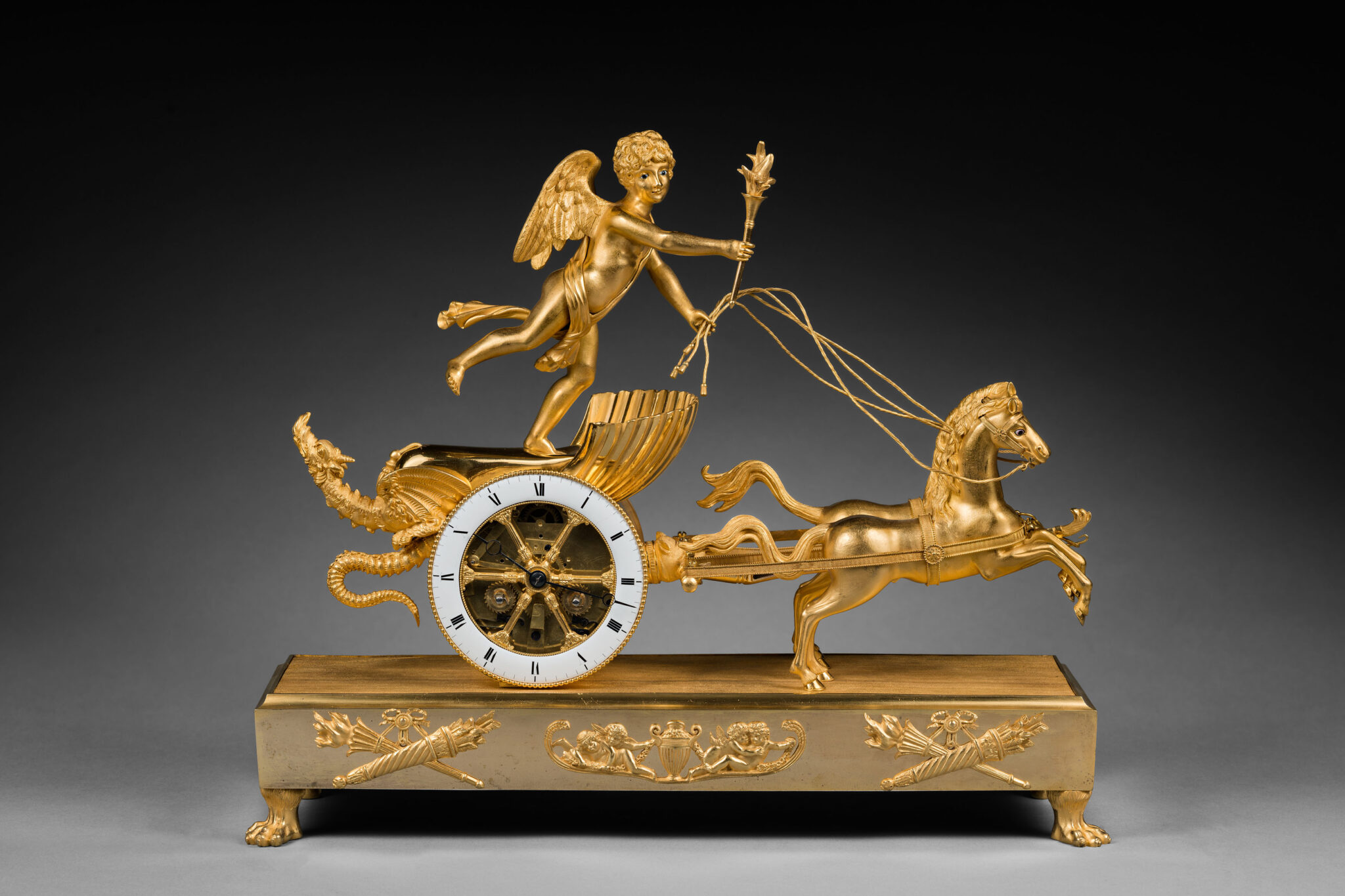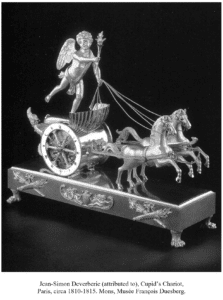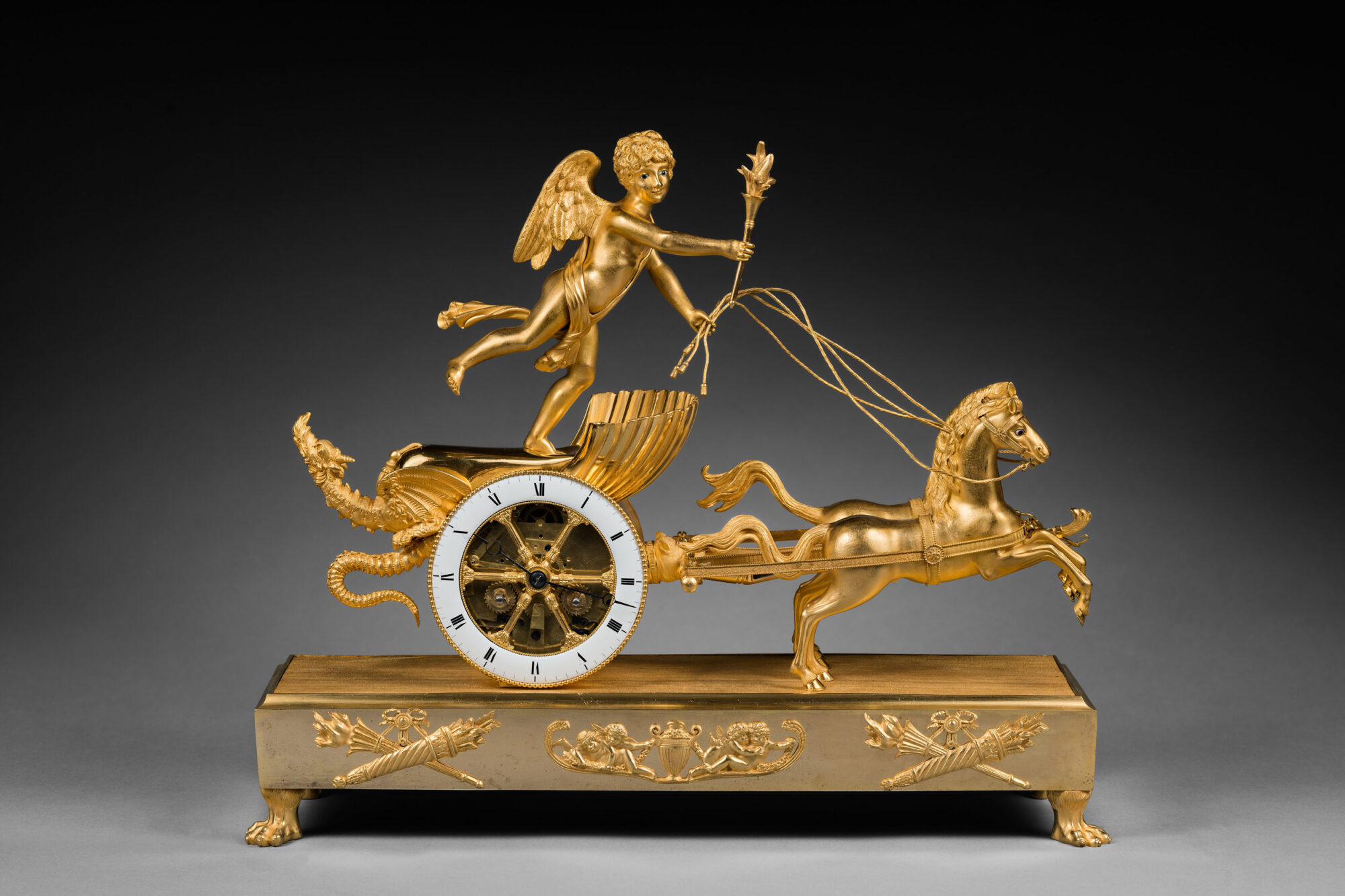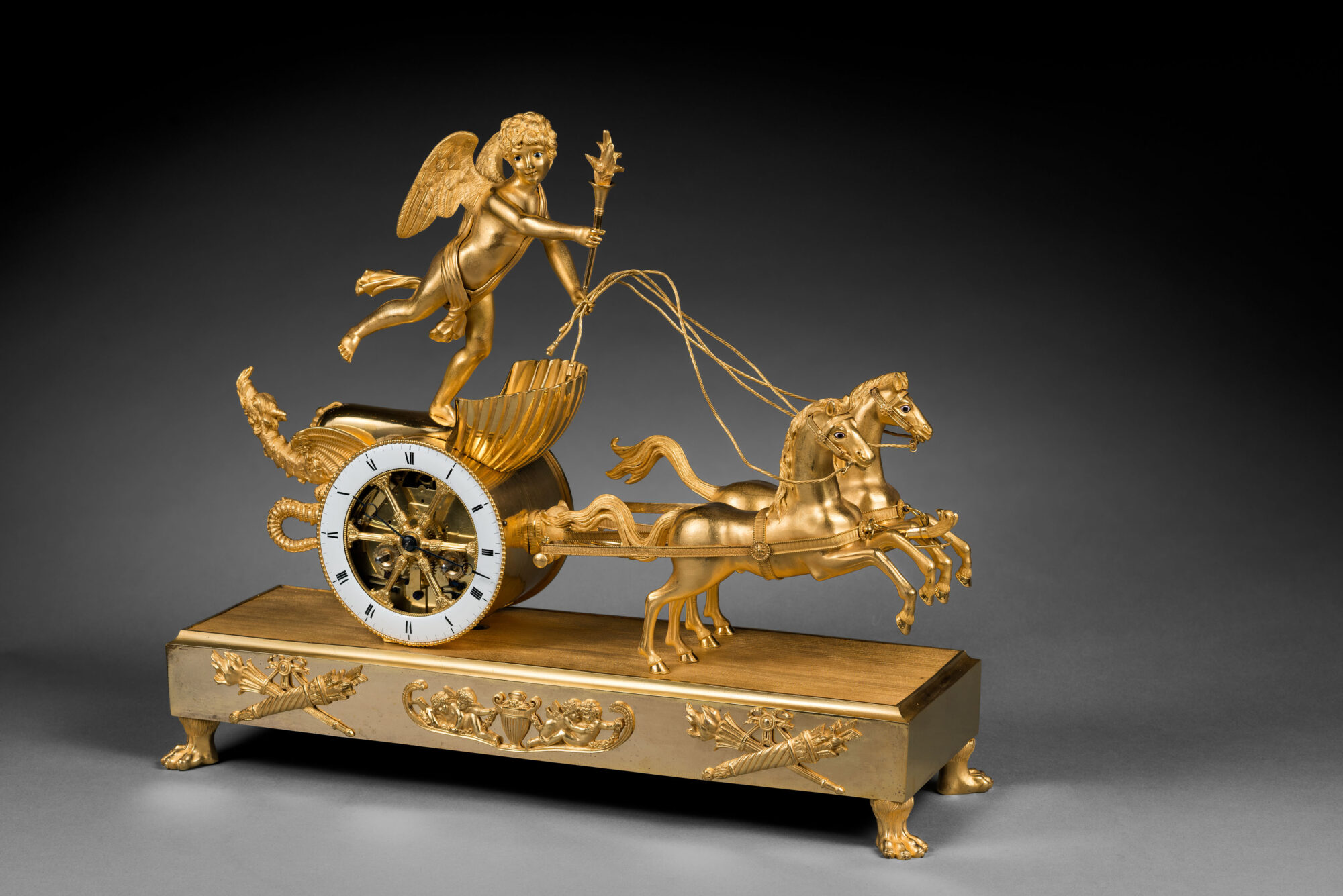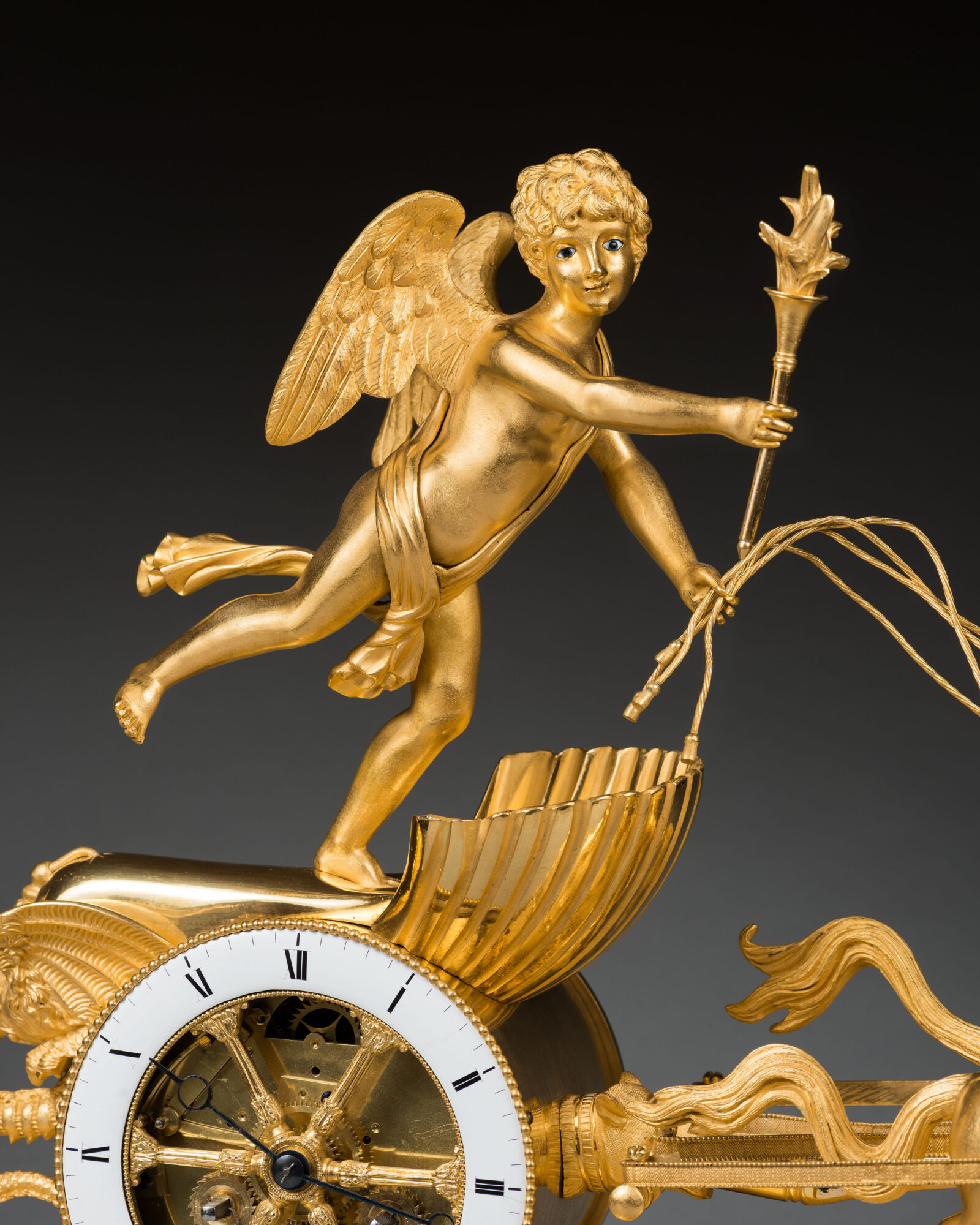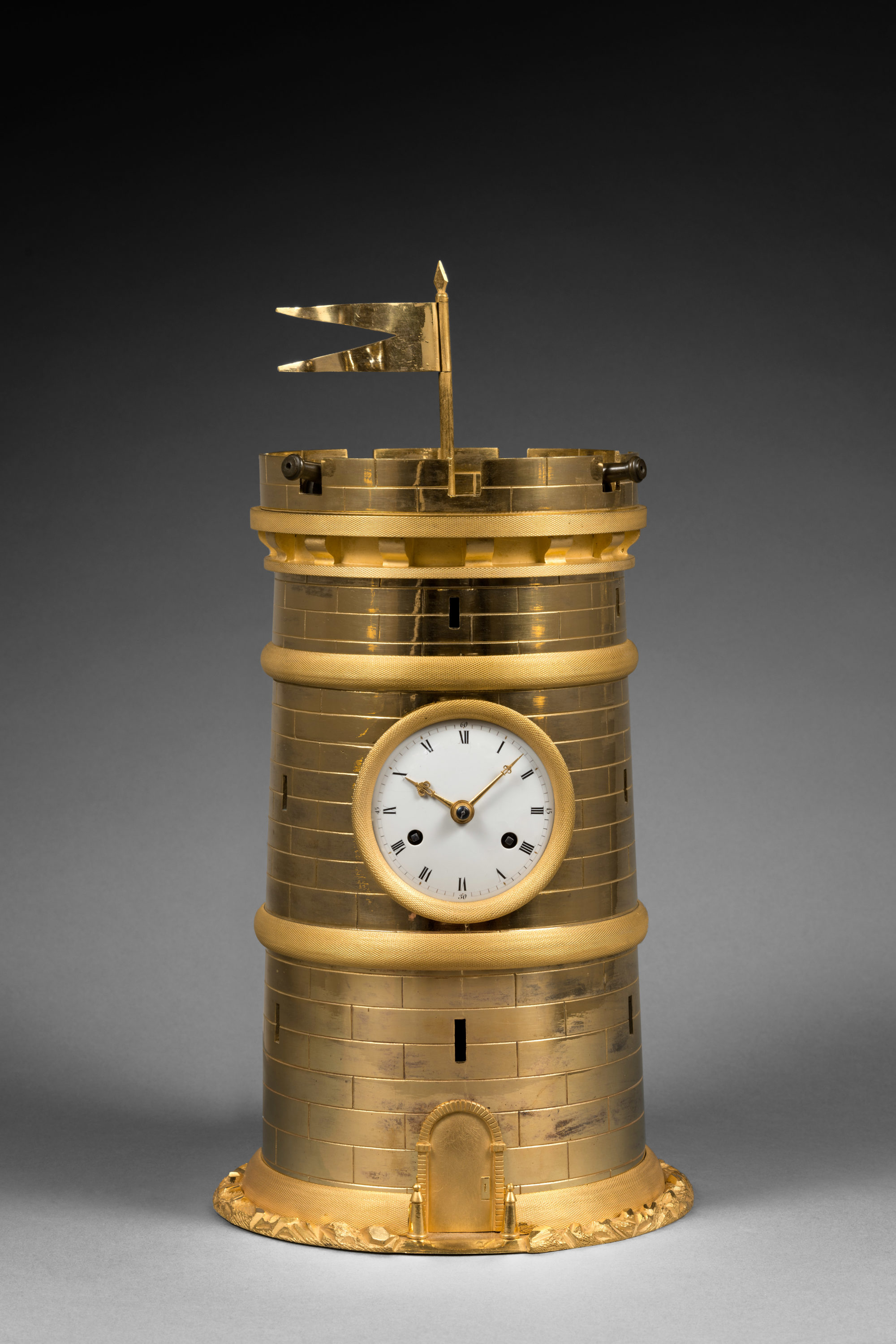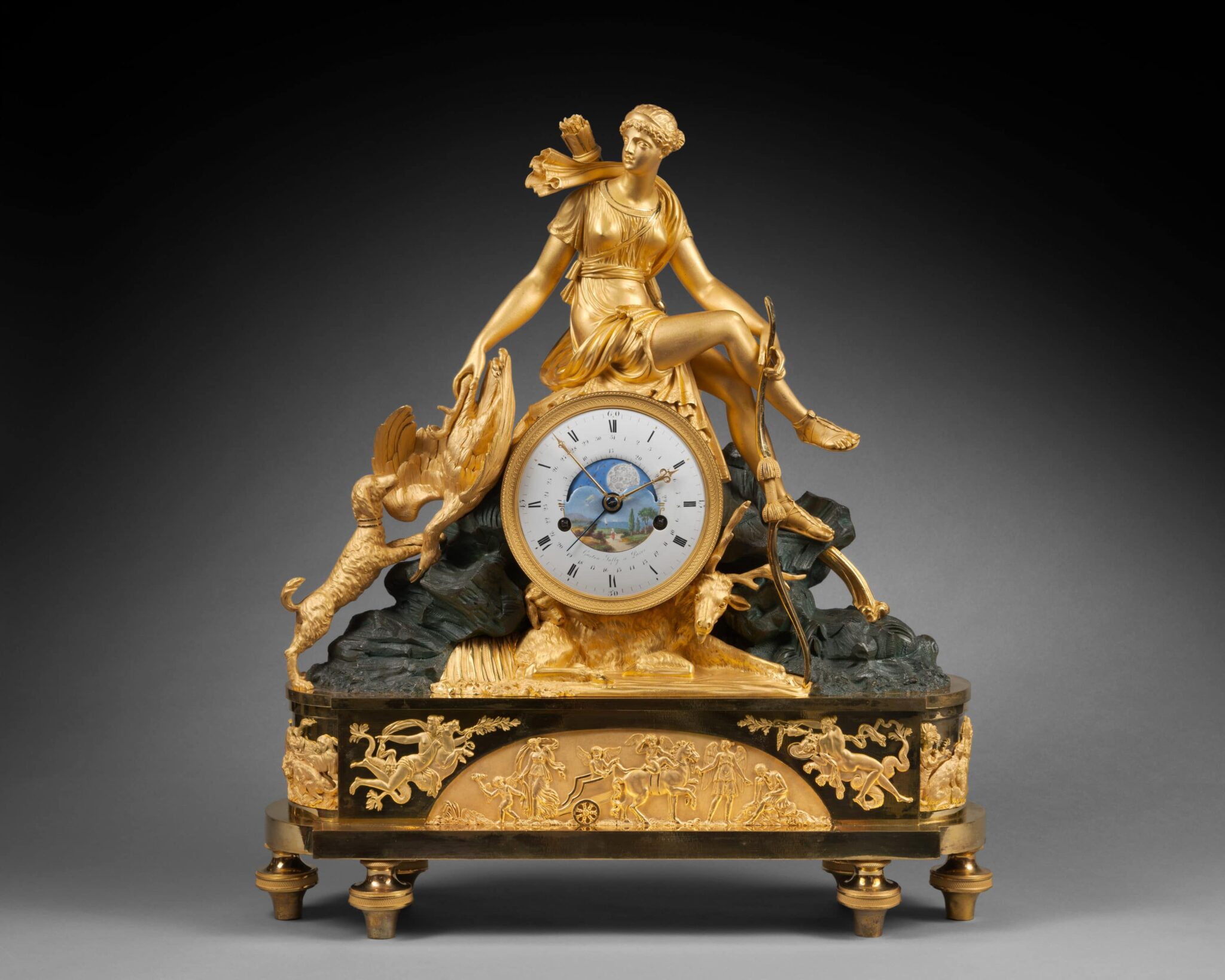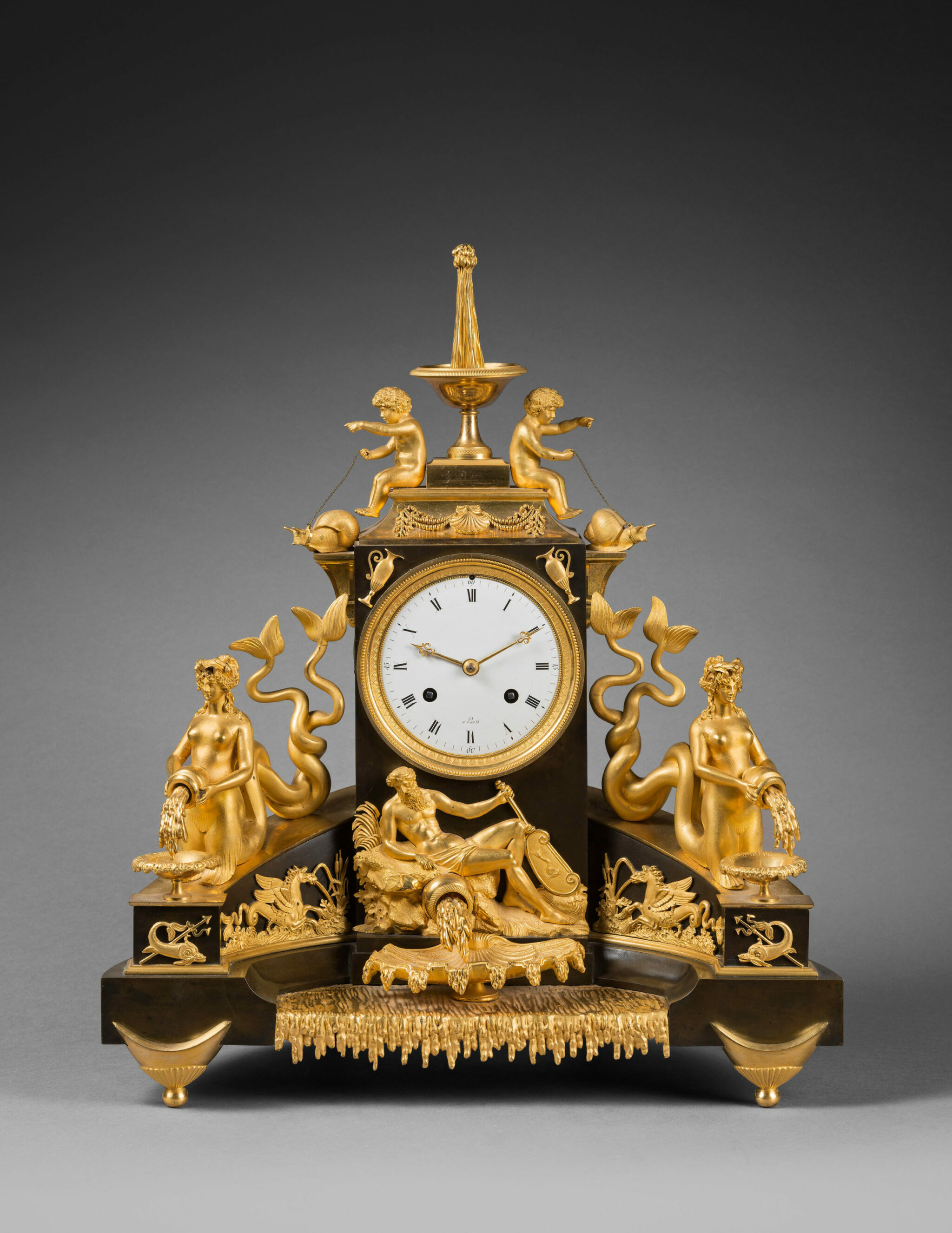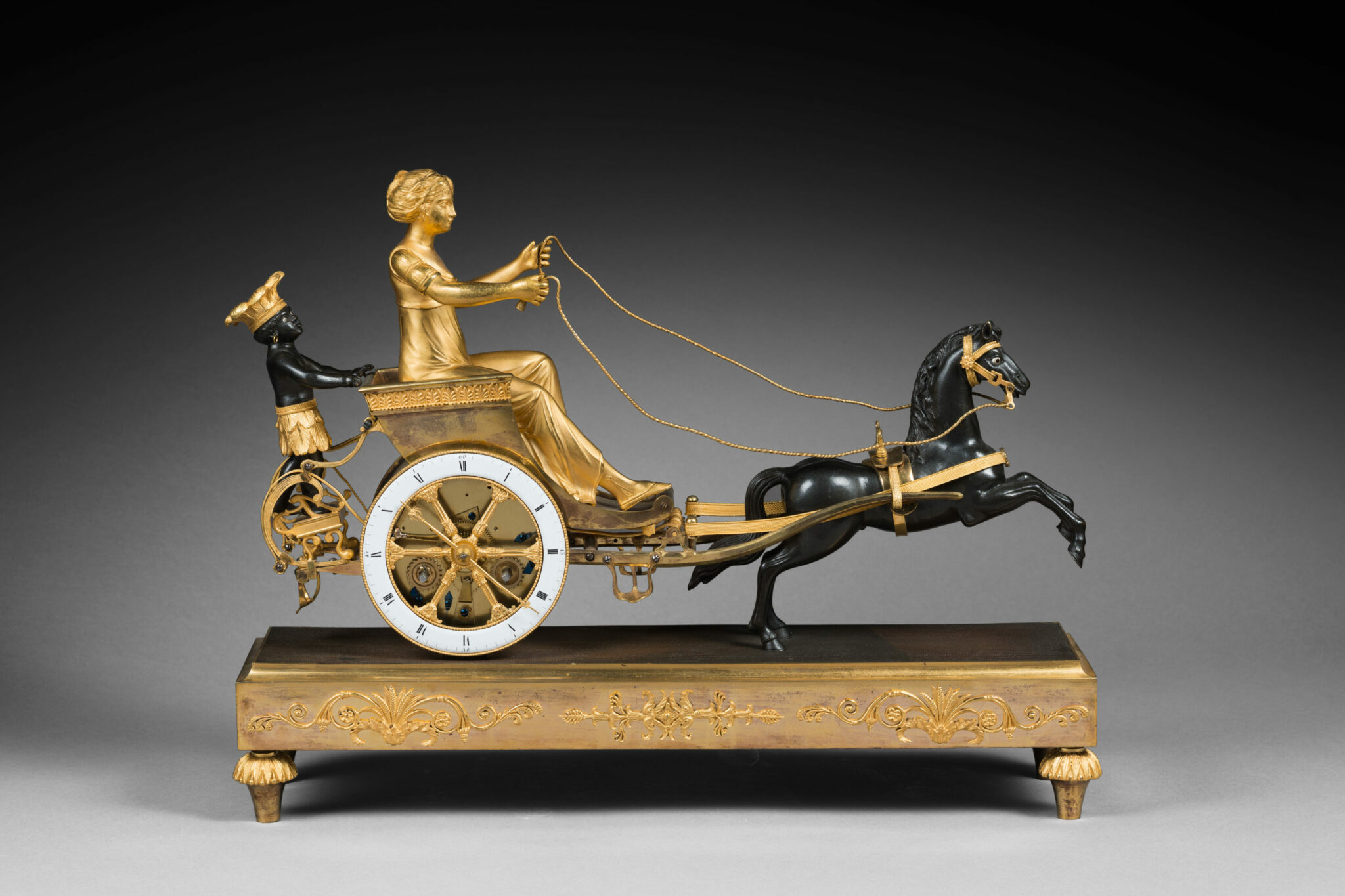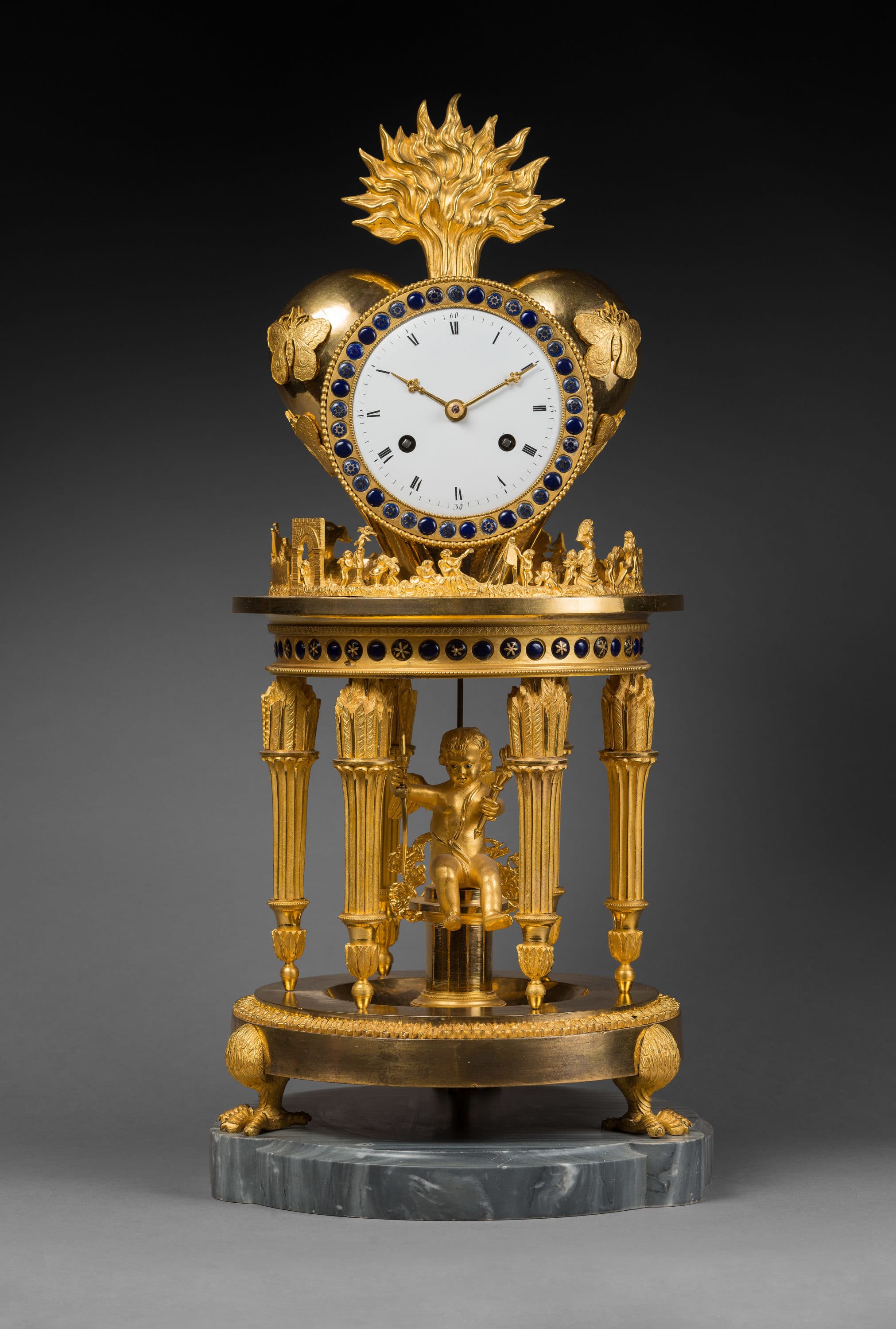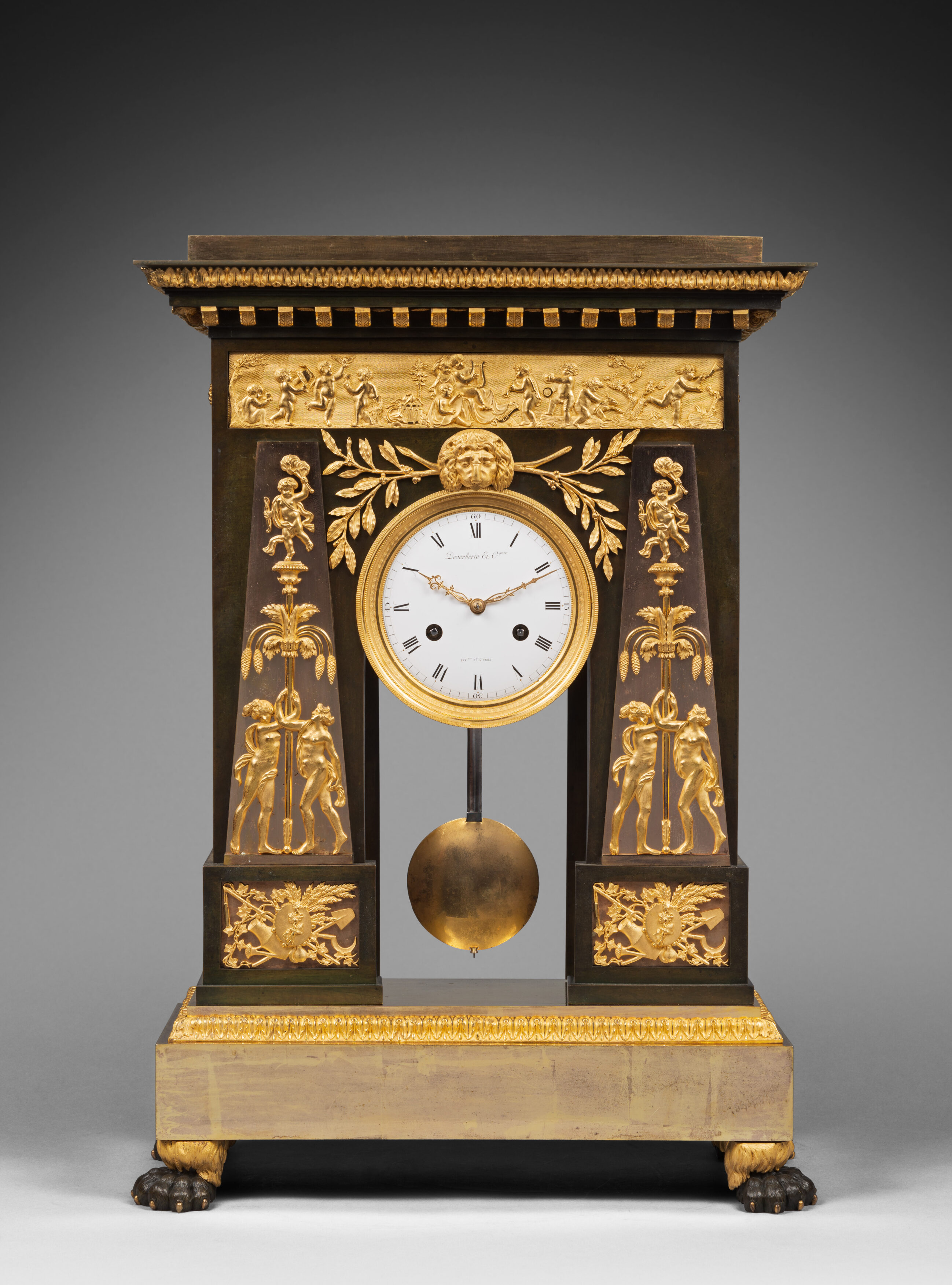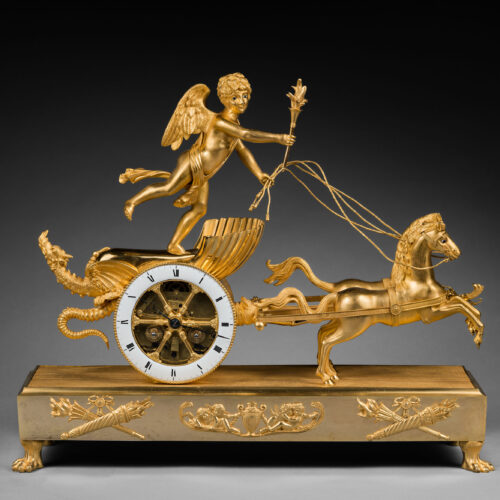Rare Matte and Burnished Gilt Bronze Mantel Clock
“Cupid’s Chariot”
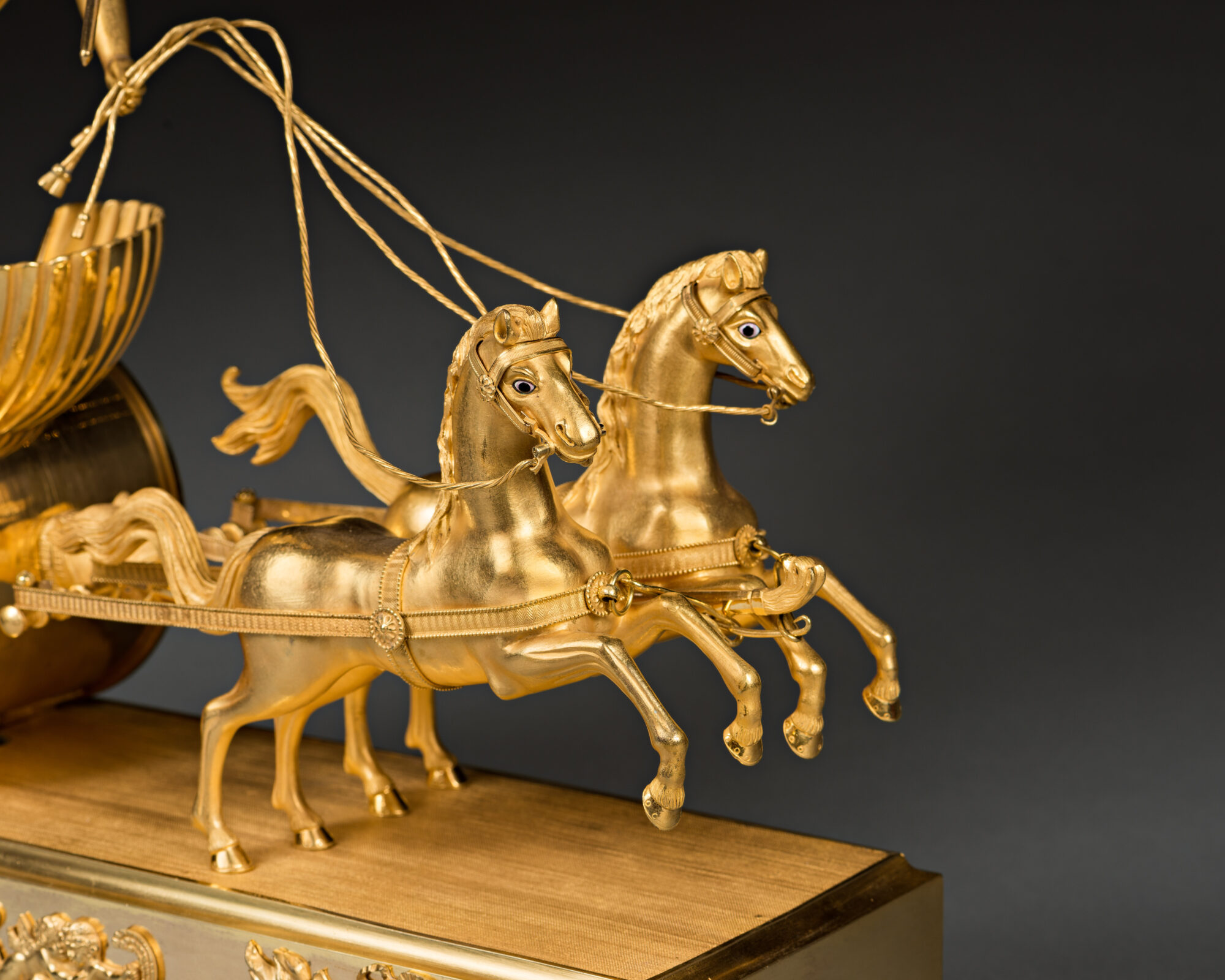
Case Attributed to Bronze Caster Jean-Simon Deverberie
Paris, Empire period, circa 1810-1815
The round enamel dial indicates the Roman numeral hours and fifteen-minute intervals by means of two blued steel Breguet hands. It is set in the wheel of a chariot drawn by two spirited horses with enamel eyes. The movement is housed in a drum case that forms the body of the chariot, with a magnificent fire-breathing dragon making up its back portion, the front being composed of a shell on which Cupid stands. The young god has enamel eyes; he is clad in light drapery that is slung across one shoulder. He brandishes a flaming torch in his right hand and holds the reins in his left. The rectangular base with sloping molding is decorated with motifs of ribbon-tied crossed torches and quivers of arrows on either side, with a central motif of stylized fronds centered by a fluted urn flanked by putti. The clock is raised upon four lion paw feet.
Discover our entire collection of antique mantel clocks for sale online or at the gallery.
La Pendulerie is the specialist in fine and rare antique clocks, based in Paris.
The high quality of the present clock’s chasing and gilding and its unusual design are typical of the work of bronze caster Jean-Simon Deverberie, the extremely talented Parisian artisan who created the clock during the First Empire. Only a few similar examples are known. One of these, identical to the present clock, bears Deverberie’s signature as well as that of the enameler Dubuisson (see Bulletin ANCAHA, op. cit, p. 22, fig. 25). Another identical clock is in the Musée François Duesberg in Mons (see Musée François Duesberg, Arts décoratifs 1775-1825, Brussels, 2004, p. 38).
Several similar clocks are known, which feature variations in the treatment of their bases. One is in the Andrès de Ribera Foundation in Jerez de la Frontera (see Catalogo ilustrado del Museo de Relojes, 1982, p. 91); a second example is illustrated in the exhibition catalogue French Clocks from the Age of Napoleon, Phoenix Art Museum, 1998-1999, p. 19. A third similar clock is in the Royal Spanish Collection (shown in J. Ramon Colon de Carvajal, Catalogo de Relojes del Patrimonio nacional, Madrid, 1987, p. 146, catalogue n° 123).
Jean-Simon Deverberie (1764 - 1824)
Jean-Simon Deverberie was one of the most important Parisian bronziers of the late 18th century and the early decades of the following century. Deverberie, who was married to Marie-Louise Veron, appears to have specialized at first in making clocks and candelabra that were adorned with exotic figures, and particularly African figures. Around 1800 he registered several preparatory designs for “au nègre” clocks, including the “Africa”, “America”, and “Indian Man and Woman” models (the drawings for which are today preserved in the Cabinet des Estampes in the Bibliothèque nationale in Paris). He opened a workshop in the rue Barbette around 1800, in the rue du Temple around 1804, and in the rue des Fossés du Temple between 1812 and 1820.
